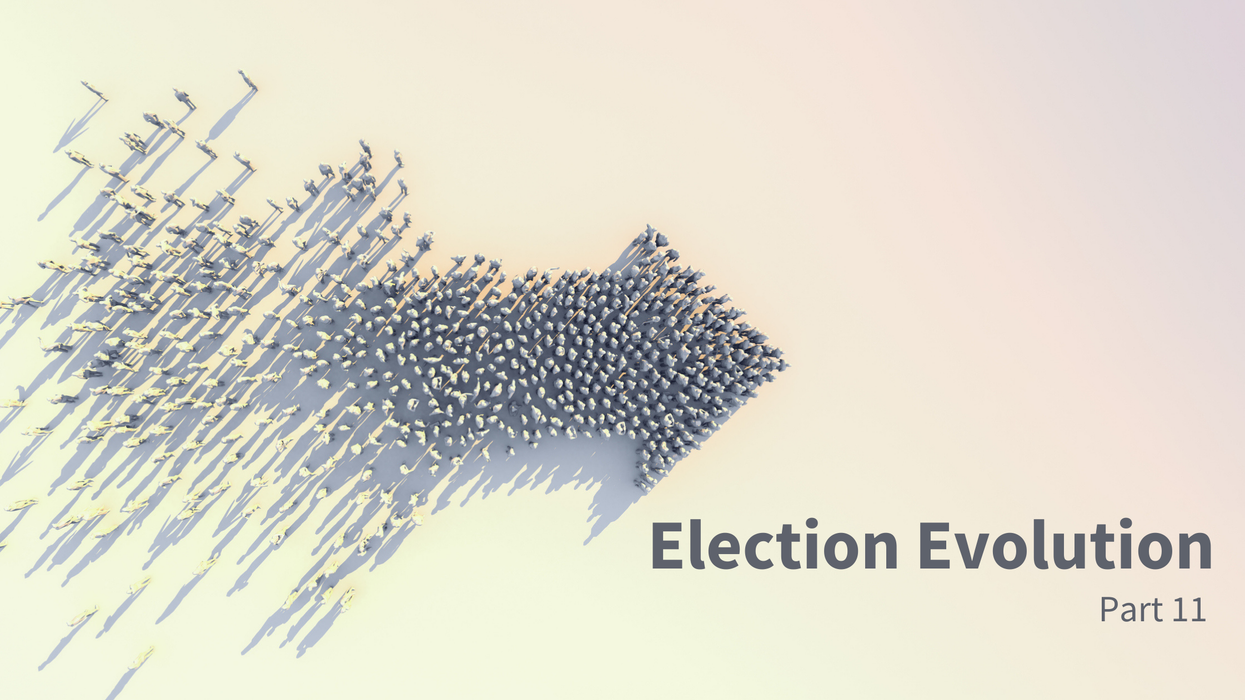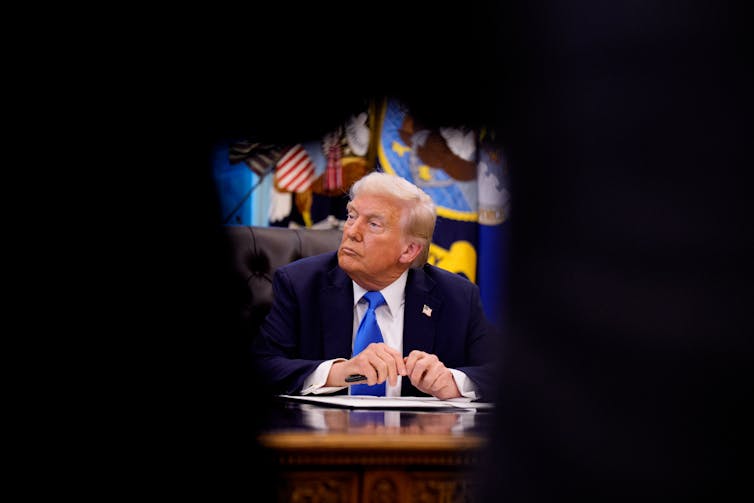This is the final entry in a series of articles examining changes to voting laws in every state.
The ongoing election evolution in the United States, while in large part catalyzed by the Covid-19 pandemic, has been building momentum for years.
Many states were already undergoing major overhauls to their election systems leading up to the 2020 election, even before the pandemic gripped the nation. And in the aftermath of the presidential contest, states have doubled down on voting reforms.
To provide a comprehensive analysis of the voting law changes in every state and Washington, D.C., since 2019, The Fulcrum compiled data from the Voting Rights Lab, the National Conference for State Legislatures, the Brennan Center for Justice, and state statutes and constitutions. This 11th installment focuses on the four remaining states.
Kentucky became a model for bipartisan lawmaking when the Democratic governor and Republican General Assembly agreed to a sweeping overhaul of election laws. Maryland, which also has a divided government, enacted a number of significant changes as well. Maine, controlled by Democrats, and Ohio, under Republican rule, made fewer changes to their election systems.
The chart below provides an overview of how voting practices have changed or remained the same in these states over the past two years. A more detailed explanation of each state's changes follows.
More from Election Evolution:
How the 5 most populous states have overhauled their election systems
How the 5 vote-by-mail states have overhauled their election systems
How 5 swing states have overhauled their election systems
How the 4 early primary states have overhauled their election systems
How 5 Southern states have overhauled their election systems
How blue states have overhauled their election systems, Part I
How blue states have overhauled their election systems, Part II
How red states have overhauled their election systems, Part I
How red states have overhauled their election systems, Part II
How the least populous states have overhauled their election systems
Kentucky
While Kentucky has only voted Democratic in three presidential elections since the 1970s, the state government is currently divided: Republicans control the General Assembly while Democrat Andy Beshear occupies the governor’s desk. That has led to both partisan disputes as well as compromise on election laws over the past three years.
In 2019, the General Assembly expanded voting options by specifying that voters who will be absent from their county of residence on Election Day – but are not permitted to vote by mail – can apply for in-person absentee early voting. (Otherwise, only people with certain excuses, such as age, disability or illness may vote by absentee ballot.)
And overriding Beshear’s veto, Kentucky enacted a new photo identification law in 2020. Going forward, all voters will be required to show a photo ID. Anyone who cannot provide such an ID may cast a provisional ballot but must later show identification for the ballot to be counted.
In 2021, Kentucky’s leaders agreed to a wide-ranging, bipartisan overhaul of election procedures. Among the changes made via that law:
- Voters can take advantage of three days of early voting. (During the 2020 election, Kentucky allowed for three weeks of early voting to accommodate voters concerned about the Covid-19 pandemic.)
- People may cast ballots at a county voter center, regardless of assigned precinct.
- Voters can return ballots through a secure drop box. Each county is required to establish at least one drop box.
- Voters will have an opportunity to “cure” a ballot if there is a question about signature matching.
- The state will pilot a process for running risk-limiting audits, considered a statistically sound method for reviewing ballot counts.
- The processing of absentee ballots is permitted to begin up to 14 days before Election Day. Under previous law, processing could not begin until 8 a.m. on Election Day.
- Election officials are required to report “irregularities” in mail-in ballots to the county attorney or the Office of the Attorney General.
- The state shall maintain an online portal for requesting absentee ballots. The portal must open 45 days before an election close two weeks out, with exceptions for uniformed and overseas citizens and those requesting emergency absentee ballots.
- The deadline for challenges to mail-in ballots has been changed from before 8 a.m. on Election Day to before 8 a.m. on the day preceding an election.
- Absentee ballots that have not been sent by the county clerk to a qualified voter but have been returned to the county board of elections or central counting board will be automatically rejected.
- Only family members, housemates and caregivers may return a ballot on behalf of another voter, limiting the practice of “ballot harvesting.”
- The state must use voting machines that create a paper trail.
Maine
Democrats control the state government in Maine, although Republicans have been competitive in recent federal elections. The state implemented several election reforms to expand accessibility to voter registration and ballot return options.
The Legislature implemented an online voter registration system that can accept applications from anyone applying for, updating or renewing a license or state ID. Maine also enabled easier voter registration by designating student IDs as valid forms of identification.
Maine also established a ballot notice and cure system. According to the law, a voter must be notified within one day of officials identifying a defective ballot. Voters may also confirm their identity over the phone for mismatched signatures. The deadline for ballot curing is 8 p.m. on Election Day.
Finally, the state enacted several changes to expand vote-by-mail options. Some polling places are now allowed to broaden the use of 24-hour drop boxes for absentee ballots and municipalities may also obtain drop boxes for absentee ballots to use outside of office buildings.
Other voting changes include:
- A new law requires the establishment of an online ballot tracking portal.
- The new deadline for online voter registration is midnight on the 21st day before Election Day. Previously, the deadline was the end of the business on the 21st day.
- Absentee ballots may not be counted until after the polls have closed on Election Day.
- Election officials may begin processing absentee ballots seven days before Election Day.
- The secretary of state must draft instructions for requesting no-excuse absentee ballots.
- Voters requesting absentee ballots must provide their name, date of birth and residential address.
- Automatic voter registration systems will be expanded in 2022.
Maryland
While three of Maryland’s last four governors have been Republicans (including the incumbent, Larry Hogan), the state generally leans toward the Democratic Party. The House of Delegates is led by a strong Democratic majority while the Senate has been under Democratic control since 1900.
Over the past three years, the split government has made several changes to election laws, including a number of moves to make it easier for people to vote.
One of the more significant changes, enacted in 2020, required that absentee ballots include prepaid postage provided by the local board of elections (which would then be partially reimbursed by the State Board of Elections). And the following year, a law was passed establishing a permanent absentee voter list for which all voters are eligible.
Another law enacted in 2021 addressed voting rights for people released from correctional facilities, in pretrial detention or serving time for misdemeanors — all of whom may vote. It requires the Department of Public Safety and Correctional Services to provide voter registration information upon release from prison and as well educate qualified voters about their rights.
In 2021, a new misdemeanor offense was established, prohibiting anyone from canvassing, electioneering, or posting campaign material in a manner that obstructs access to a ballot drop box, or placing any campaign material or any other unauthorized material on a ballot drop box.
Maryland legislators also pushed through a handful of small changes that made the process easier for registering to vote or requesting an absentee ballot, particularly for military and disabled voters.
A 2019 law requires local boards of elections to prepare and release a report of the unofficial results of the absentee ballot count at the end of each day of absentee canvassing. That same year, the statute authorized counties to establish one early voting center in addition to the number of centers required. And a 2021 law requires early voting centers to be open 8 am to 8 pm on early voting days in elections other than a presidential general election.
Ohio
Ohio, a key battleground state controlled by Republicans, allowed temporary measures to ease voting in 2020 but enacted few changes in 2021.
The state now prohibits election officials from accepting money from any non-governmental or private entity. The only exceptions to this law include the donation of a building to serve as a polling place and the donation of food to officials on Election Day.
Ohio also requires the Board of Election to audit election results.
And officials may not change the time, place or manner of conducting an election except in emergency situations.




















